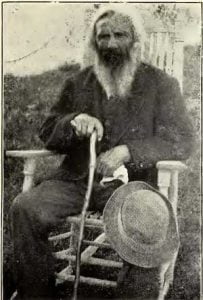Narrative of Angelique Langlade
The concluding narrative of these personal recollections is that of Angelique Langlade, still living in Penetanguishene at an advanced age, and the last survivor but one of a somewhat noted family. Her command of English is very limited, but her mixed dialect so picturesque and pointed, that I am constrained to present it almost verbatim, in her own simple but expressive style, with apologies to several writers of dialect literature. Ma name, Angelique Langlade; born Drummon Islan; me Chippawa half-breed; ma mudder, Josephine Ah-quah-dah, Chippawa squaw, Yankee tribe; ma fadder, Charles Langlade, French half-breed, hees born Mackinaw, an move Drummon Islan … Read more



